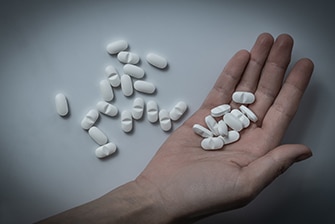What You Need to Know about Medication-Assisted Treatment for Opioid Addiction
Medication-Assisted Treatment (MAT) is one of the most under-utilized tools we have to fight our country’s ongoing addiction crisis. Ideally, this intervention employs specific pharmaceutical drugs combined with counseling and behavioral therapies, but its true power is often obscured by misunderstanding. Effective use of MAT can make the difference between a long, healthy life and an untimely death by overdose. Here’s what you need to know about MAT and why people battling addiction should consider it.
Decades of research shows that properly administered MAT is a safe, effective treatment option for substance abuse, increasing the likelihood that people in recovery from an opioid addiction will stay sober and in treatment longer than peers who don’t utilize MAT. The National Association of State Alcohol and Drug Abuse Directors (NASADAD), World Health Organization (WHO) and the National Institute on Drug Abuse (NIDA) all strongly support access to MAT for drug abuse.
MAT is most useful when combined with intensive one-one-one psychotherapy, group support, and complementary therapies. The way in which MAT affects the brain effectively gives the addict breathing room and time to address the underlying causes of their addiction. MAT allows the addict to focus on their recovery instead of being compelled to use by co-opted neurological processes. MAT is a tool to be used in reaching that goal of long-term abstinence from drugs and alcohol. However, if MAT is used on its own, without other forms of supportive therapy, it is unlikely that recovery will last.
MAT covers both the immediate term use of naloxone to revive overdose victims and longer-term use by those in addiction treatment programs. Recent legislation, including the Comprehensive Addiction Recovery Act, has emphasized the importance of supplying first responders with naloxone, a powerful opioid overdose reversal drug. Other formulations of MAT are used in longer-term therapies by addiction treatment providers. Each can be effective.
One of the hurdles to those who would like to use MAT is that 12 step programs are not supportive of its use. Those programs define sobriety as complete abstinence from mind-altering substances, a category into which MAT falls. This is unfortunate because those who use MAT would very often benefit from the support that can be found in 12 step programs.
Like any treatment, MAT is not for everyone. Individuals should discuss all their concerns with their addiction treatment team, hopefully including a medical doctor who is a person with substance use disorderion specialist. All treatment protocols have benefits and disadvantages. Make sure you are comfortable with your choice and know that there are many different treatment options.
Ultimately, MAT is just one option to consider when creating a quality long-term addiction treatment plan. The most sustainable recovery plans aren’t oriented around any one treatment modality, but include a host of therapies to ensure the best results. There is no one intervention that can protect someone in addiction recovery from relapse. Freedom from addiction must be grown and nurtured continuously over time in order to yield a fulfilling, fruitful life.
The Best Call You Will Ever Make
Call Now to Speak Confidentially with an admission counselor.
